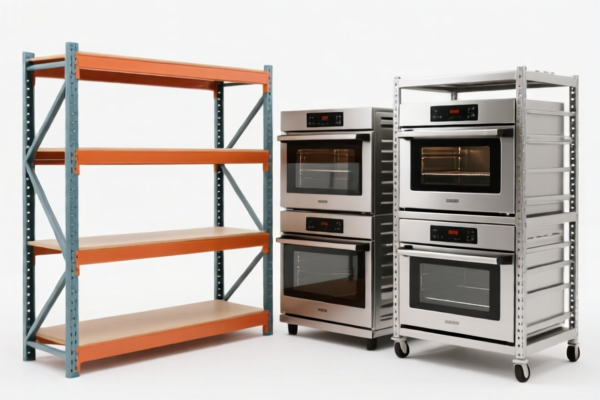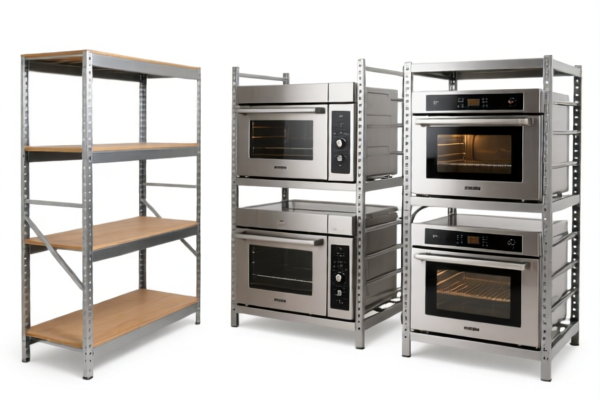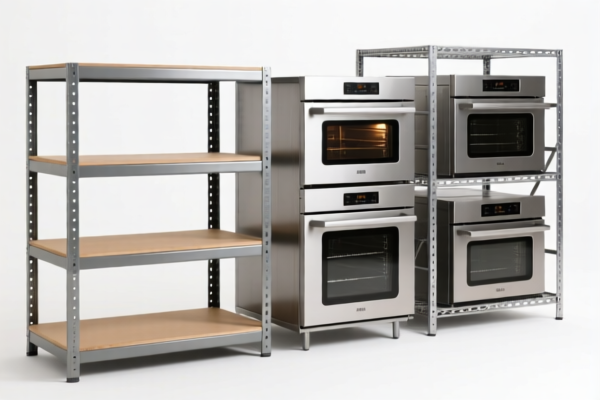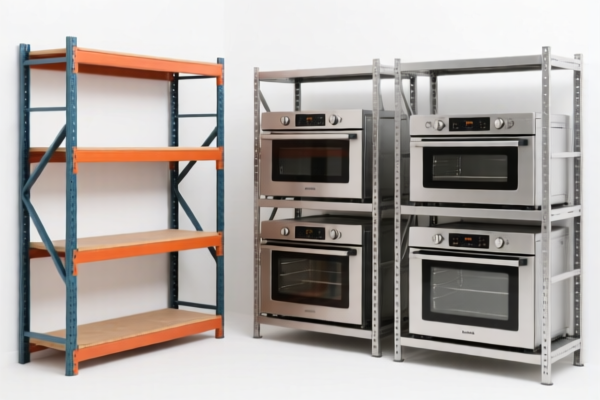| HS Code | Official Doc | Tariff Rate | Origin | Destination | Effective Date |
|---|---|---|---|---|---|
| 9403200075 | Doc | 80.0% | CN | US | 2025-05-12 |
| 9403200082 | Doc | 80.0% | CN | US | 2025-05-12 |




Goods Shelves
Goods shelves, also known as retail shelving, are a fundamental component of retail environments, used to display merchandise for sale. They facilitate product organization, customer browsing, and efficient sales operations.
Material
A variety of materials are employed in the construction of goods shelves, each offering different characteristics in terms of cost, durability, and aesthetics:
- Steel: Provides high load-bearing capacity and durability, suitable for heavy items and high-traffic areas. Often powder-coated for corrosion resistance and a range of colors.
- Wood: Offers a traditional and aesthetically pleasing look. Commonly used for clothing boutiques, bookstores, and specialty shops. Can be more expensive than steel and requires more maintenance. Variations include solid wood, plywood, and MDF (Medium-Density Fiberboard).
- Metal (Aluminum): Lightweight and corrosion-resistant, often used for displays requiring portability or a modern aesthetic.
- Plastic: Cost-effective and versatile, suitable for lighter items and temporary displays.
- Glass: Used for showcasing premium products or creating a visually open display. Typically tempered for safety.
- Combination Materials: Many shelves utilize a combination of materials, such as steel frames with wood or glass shelves.
Purpose
- Merchandise Display: The primary function is to present goods in an organized and accessible manner to customers.
- Space Optimization: Shelves maximize the use of retail floor space, allowing for a greater volume of product to be displayed.
- Product Organization: Categorizing and arranging products on shelves improves the shopping experience and facilitates easy navigation.
- Visual Merchandising: Shelves play a crucial role in visual merchandising, influencing customer purchasing decisions through product placement and presentation.
- Inventory Management: Shelves aid in inventory management by providing a designated location for products.
Function
- Load Bearing: Shelves must be able to support the weight of the displayed merchandise.
- Stability: Shelves need to be stable and secure to prevent tipping or collapse.
- Adjustability: Many shelves are adjustable in height and configuration to accommodate products of varying sizes.
- Accessibility: Shelves should be designed to allow customers easy access to products.
- Modularity: Modular shelving systems allow for flexible configurations and easy expansion or reconfiguration.
Usage Scenarios
- Supermarkets and Grocery Stores: Used extensively for displaying food, beverages, and household items.
- Retail Stores (Clothing, Electronics, Books): A core component of all retail environments, adapted to the specific needs of the merchandise.
- Warehouses: Used for storing and organizing inventory.
- Garages and Workshops: Used for organizing tools and equipment.
- Home Storage: Used in closets, pantries, and other storage areas.
Common Types
- Gondola Shelving: Freestanding shelving units, commonly used in supermarkets and retail stores. Available in single-sided or double-sided configurations.
- Wall Shelving: Mounted directly to the wall, providing a space-saving solution.
- Cantilever Shelving: Features arms extending from a vertical support, suitable for displaying large or bulky items.
- Wire Shelving: Lightweight and versatile, often used in storage areas and retail displays.
- Slotted Angle Shelving: Utilizes slotted angle posts and shelves, providing a flexible and adjustable storage solution.
- Adjustable Shelving: Shelves can be moved up or down to accommodate products of varying heights.
- Specialty Shelving: Designed for specific products, such as wine bottles, shoes, or cosmetics.
- Round Shelving: Displays products in a circular format, often used for promotional items or featured products.
Goods shelves can be categorized under furniture and parts thereof, specifically those designed for display or storage. The following HS codes are relevant based on the provided information:
- 9403200075: This HS code covers “Other furniture and parts thereof: Other metal furniture Other: Counters, lockers, racks, display cases, shelves, partitions and similar fixtures: Boltless or press-fit steel shelving units prepackaged for sale as described in statistical note 3 to this chapter”. This applies to prepackaged steel shelving units. The first two digits (94) indicate furniture; the next two (03) specify parts thereof; the following six (200075) further define other metal furniture, specifically boltless or press-fit steel shelving units. The base tariff is 0.0%, with additional tariffs of 25.0% and a potential increase to 30% after April 2, 2025, plus a 25% additional tariff on steel and aluminum products. The total tariff rate is 80.0%.
- 9403200082: This HS code covers “Other furniture and parts thereof: Shelves and other furniture for display or storage: Of wood Welded wire rack, whether or not galvanized, plated or coated”. This applies to wooden shelves and welded wire racks (galvanized, plated, or coated). The first two digits (94) indicate furniture; the next two (03) specify parts thereof; the following six (200082) further define shelves and other furniture for display or storage, specifically those made of wood or welded wire. The base tariff is 0.0%, with additional tariffs of 25.0% and a potential increase to 30% after April 2, 2025, plus a 25% additional tariff on steel and aluminum products. The total tariff rate is 80.0%.
According to the provided reference material, the HS code options related to 'goods shelves' are limited, with only the following 2 found.
Regarding HS codes 9403200075 and 9403200082, please note the need to verify the material (steel, wood, or wire) and may require documentation confirming the composition of the shelving units. Additionally, a 25% additional tariff applies to steel and aluminum products.
Customer Reviews
No reviews yet.